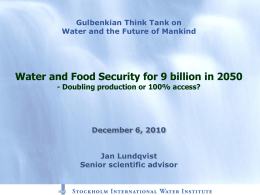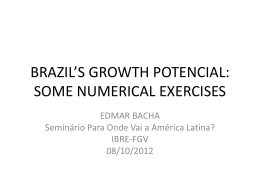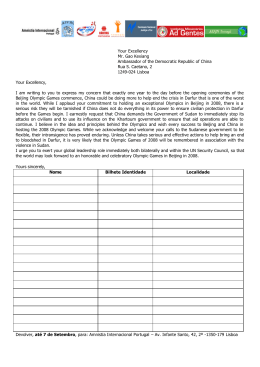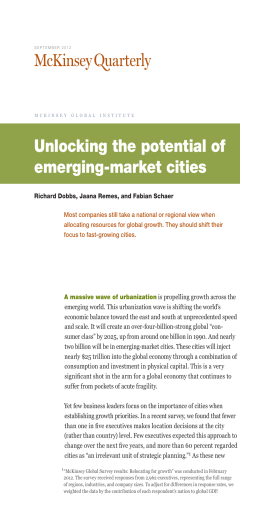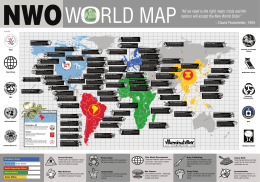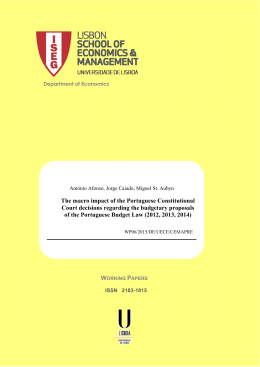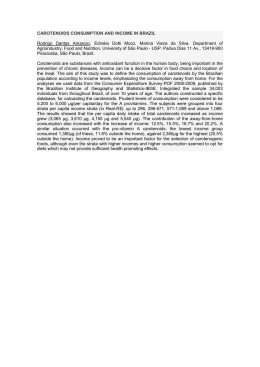Gapminder World 2012 in pdf available at gapminder.org/downloads/world-pdf Documentation for version 2012-08-28 The Gapminder World 2012 in pdf format is mainly based on the data used in the on-line Gapminder World, but some additions were made. Below is the documentation of the data. Life expectancy For most countries we use the data from Gapminder Life Expectancy at birth (Gapminder documentation 004 – version 4). Data and documentation available at: gapminder.org/data/documentation/gd004/ For South Sudan we used South Sudan National Bureau of Statistics (2012), “Statistical Yearbook 2011”, table 3.30, available at: ssnbs.org/storage/South%20Sudan%20Statistical%20Yearbook%202011%20FINAL.pdf For Kosovo we used data from World Bank data, available at: data.worldbank.org/indicator/SP.DYN.LE00.IN For these countries we used data from the CIA World Fact book.: Andorra; Antigua and Barbuda; Dominica; Kiribati; Liechtenstein; Micronesia, Federated States of; Monaco; Nauru; Palau; Saint Kitts and Nevis; San Marino; Seychelles; Tuvalu. GDP per capita For most countries we use the data from Gapminder GDP per capita by purchasing power parities (Gapminder documentation 001 – version 10). Data and documentation available at: gapminder.org/data/documentation/gd001/ For South Sudan we did an estimate based on the following: South Sudan National Bureau of Statistics has published a figure for GDP per capita (by exchange rate) for 2010, available at: ssnbs.org/storage/GDP%20Release_Directors%20statement_11.08.11.pdf We took the ratio between this figure and the corresponding figure for Sudan. This ration was then multiplied to the GDP per capita (by PPP) for Sudan for 2011. Year Country GDP per capita (e-rate, current) GDP per capita (PPP, fixed 2005 i$) 2010 Sudan 1538 2695 2010 South Sudan 1546 2011 Sudan 3182 2011 South Sudan 3199 Table 1: Figures used to calculate GDP per capita for South Sudan. Sources: World Bank data for GDP pc (e-rate), Sudan 2010. South Sudan National Bureau of Statistics for GDP pc (e-rate), South Sudan 2010. Gapminder GDP per capita by purchasing power parities for GDP pc (by PPP) for Sudan 2010 and 2011. Calculated as described in the text for GDP pc (by PPP) for South Sudan 2011. ½ For the countries listed in table 2 below we used data from the CIA world book, available at: cia.gov/library/publications/the-world-factbook/fields/2004.html#an Some countries only had estimates for earlier years. For those countries we extrapolated from that year, assuming zero-growth. The figures were all in 2011 US dollars. To transform them to 2005 international dollars (the units we use), we used the ratio for US between the CIA estimate (in 2011 US dollars) and the Gapminder estimate (in 2005 international dollars). This ratio was applied to all CIA estimates. 2011 US dollars Estimate is for what year Andorra 37 200 2011 31 679 Antigua and Barbuda 18 200 2011 15 499 Dominica 14 000 2011 11 922 Kiribati 5 800 2011 4 939 141 100 2008 120 160 Micronesia 2 200 2008 1 874 Monaco* 63 400 2009 53 991 Nauru 5 000 2005 4 258 Palau 8 100 2008 6 898 Saint Kitts and Nevis 15 800 2011 13 455 San Marino 36 200 2009 30 828 Seychelles 25 000 2011 21 290 Tuvalu 3 400 2010 2 895 Kosovo 6 500 2011 5 535 United States 49 000 2011 41 728 Liechtenstein* 2005 international dollars Table 2. Estimates from CIA World Factbook. Sources: CIA world fact book for all “2011 dollar” estimates. The Gapminder GDP per capita data for USA “2005 international dollars”. Calculated as described in the text for “2005 international dollars” for all other countries. Notes: *GDP per capita is in the marginal of the graph; estimate not needed. Population For most countries we use the data from Gapminder Total Population (Gapminder Documentation 003 – version 2). Data and documentation available at: gapminder.org/data/documentation/gd003/ For South Sudan we used data from World Bank data, available at data.worldbank.org/indicator/SP.POP.TOTL For Kiribati, Micronesia and Kosovo we used data from the CIA World Fact book. For the smallest nations we did not need any population figures since they were below the minimum size for bubbles at 3 million. 2∕2
Download

